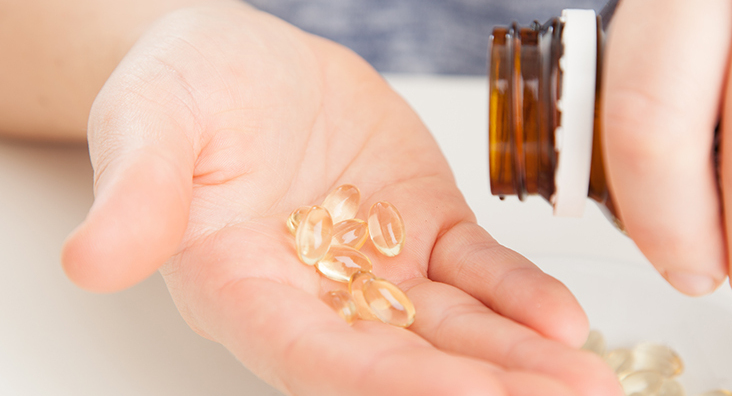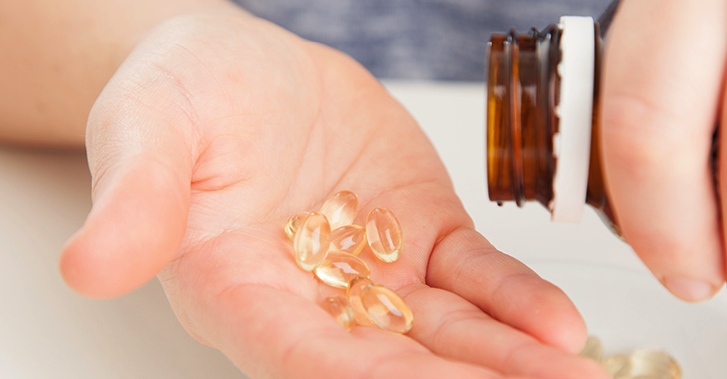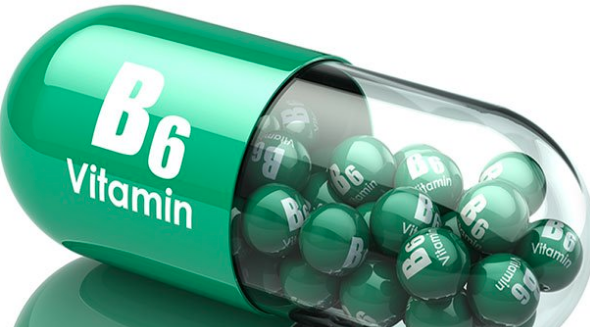Vitamin E is a chain of essential fat-soluble vitamin compounds that you can typically get from food alone (1). Because it is a fat-soluble vitamin that only requires fat to digest well, it can be easy to get too much of this crucial vitamin through supplementation (2).
Full-spectrum vitamin E contains four tocopherols and four tocotrienols (3). Unlike other fat-soluble vitamins like vitamin D, vitamin E only requires seamless fat digestion to pass through the body and in the cell walls (4).



However, if you are not able to digest fat well or at all, vitamin E will be difficult for you to absorb (5, 6). Proper fat absorption is necessary to get adequate levels of vitamin E (7).
For the most part, many people can digest vitamin E well. But for others who suffer from maldigestion and malabsorption, it can be harder (8).
Those who suffer from malabsorption or maldigestion may also have underlying disorders or issues. These can include Celiac Disease, intestinal permeability (leaky gut), Irritable Bowel Syndrome (IBS), and more (9, 10).
Do you think you are getting too much vitamin E in your diet through supplementation or food? Learn more about how much vitamin E is too much, symptoms of toxicity, the side effects, and exactly how much you should be taking below.
Summary: Vitamin E is a fat-soluble vitamin. Fat-soluble vitamins in general should not be consumed in excess. Many people with maldigestion or malabsorption issues may experience inability to absorb vitamin E properly, which could lead to a deficiency.
Table of Contents
How much Vitamin E is too much?
Vitamin E toxicity is one of the fat-soluble vitamins that can be overdone (11, 12). Vitamin E requires fat for absorption (13). Malabsorption and maldigestion issues can make it hard or impossible to absorb vitamin E (14).
Other fat-soluble vitamins include vitamins A, D, and K (15), which means they are all more easily stored in the body (16). It is possible to get too much of any of these, mostly through too much supplementation. It is rare to eat your way to toxicity with these vitamins through your diet.
Serum concentrations of vitamin E largely depend on the health of the liver (17), because vitamin E must absorb well through the liver and small intestines to make it into the cell walls (18).
The exact levels of vitamin E vary per person. The typical dosage of vitamin E for adults male and female is 15 mg per day (19). Most people can get that through food alone for the vast majority of people (20).
The exact levels of too much vitamin E vary per individual, based on absorption, other nutrient levels, age, and more.
If you get too much vitamin E from supplements, symptoms are likely to set in. Common symptoms of too much vitamin E include weakness, nausea, fatigue, and more (21, 22)). Read below to find out more about taking too much vitamin E.
Summary: Recommended vitamin E intake varies based on the individual, ability to absorb nutrients, age, and much more. On average, the typical dose for adult males and females is 15 mg per day. Supplementation is only necessary if levels are low, most people can reach their vitamin E intake from food alone. Common symptoms of too much vitamin E includes weakness, nausea, and fatigue.
Symptoms of too much Vitamin E (Overdose or Toxicity)
It is possible to get too much vitamin E because it is a fat-soluble vitamin. It is highly unlikely and rare to get too much vitamin E from your dietary intake alone (23). Some foods are rich in vitamin E, and they are typically staples in a standard healthy diet.
Make sure to get plenty of vitamin E from food like the ones listed below. Only take a vitamin E supplement regularly if your doctor or healthcare professional recommends it. There can be many signs that you are taking too much vitamin E.
Signs that you are taking or getting too much vitamin E include (24):
- Weakness
- Nausea
- Diarrhea
- Headache
- Rash
- Blurry vision
Vitamin E deficiency does not affect many, as it is exceedingly rare in healthy individuals. As a fat-soluble vitamin, the body can store a great deal of vitamin E over time (25), so be careful not to take too much.
Learn more about the common side effects, along with the latest information on the proper dosages per age group and sexual orientation.
Summary: Vitamin E toxicity can occur, especially because it is a fat-soluble vitamin. Most often this occurs from taking supplements. Only take a supplement if levels are low and your doctor recommends it. Weakness, nausea, diarrhea, headache, rash, and blurry vision are all symptoms of toxicity. Vitamin E deficiency is rare in healthy individuals because the body can store vitamin E well.
Side Effects of too much Vitamin E
Along with the symptoms listed above, too much vitamin E can negatively affect other aspects of your health and organs on an even deeper level. Excessive bleeding is one of the most harmful side effects of too much vitamin E (26).
When you take too much vitamin E, the body stores too much, leading to downstream issues. That can result in many potential risk factors, such as the ones listed below (27).
- Excessive bleeding
- Vomiting
- Issues with ovaries in females or testes in males
- Life-threatening defect in babies called necrotizing enterocolitis (NEC) (28)
If you are taking low doses of vitamin E, as prescribed by a doctor, you will likely be ok.
Keep in mind, all of that depends on how well you can digest and absorb vitamins and minerals past the cell membrane. Other nutrient levels can also affect how much vitamin E you absorb (29). But for the most part, vitamin E requires adequate digestion and fat absorption.
Do you know if you are getting the proper amount of vitamin E in your diet and supplementation? Check out the information below for the correct dosages to find out.
Summary: Too much vitamin E can negatively affect the body. Common side effects include excessive bleeding, vomiting, issues with reproductive organs for both males and females, or even a life-threatening defect in babies called necrotizing enterocolitis (NEC). Only take vitamin E if your doctor prescribes it. Some people have digestion and fat absorption issues, which can inhibit vitamin E absorption.
How much vitamin E should I take?
Full-spectrum vitamin E includes four tocopherols and four tocotrienols. Vitamin E is a fat-soluble vitamin with powerful antioxidant properties. Supplement types are vital to take note of as well because vitamin E comes in many forms (30).
A well-known, synthetic form of these nutrients included in low-end supplements is dl-alpha-tocopherol (31). The presence of the letter “l” is vital to take note of; this synthetic form may be in the succinate or acetate or other forms (32).
An adequate dosage of vitamin E from 0 to 6 months is 4 mg, 7 to 12 months is 5 mg, 1 to 3 years 6 mg, 4 to 8 years is 7 mg, 9 to 13 years of age is 11 mg, and ages 14 and up requires 15 mg of vitamin E per day. (33)
These are standard amounts based on evergreen shifting data. They can vary with your level of absorption, other nutrients, and more.
Summary: Vitamin E is not only an essential fat-soluble vitamin, but a powerful antioxidant. Adequate doses of vitamin E is 4 mg for 0-6 months, 5 mg for 7-12 months, 6 mg for 1-3 years, 7 mg for 4-8 years, 11 mg for 9-13 years, and 15 mg for over 14 years. Vitamin E comes in many forms, including four tocopherols and four tocotrienols.
Conclusion
Vitamin E is a group of essential fat-soluble vitamin compounds that is vital for everyone to get, ideally from food, but sometimes through supplementation.
Side effects and symptoms of vitamin E overdose can be quite common because it typically gets well-absorbed as a fat-soluble vitamin.
Be sure to get your blood levels tested if you suspect you are low in vitamin E. Taking vitamin E supplements often can cause more harm than good if you are already at sufficient levels.














